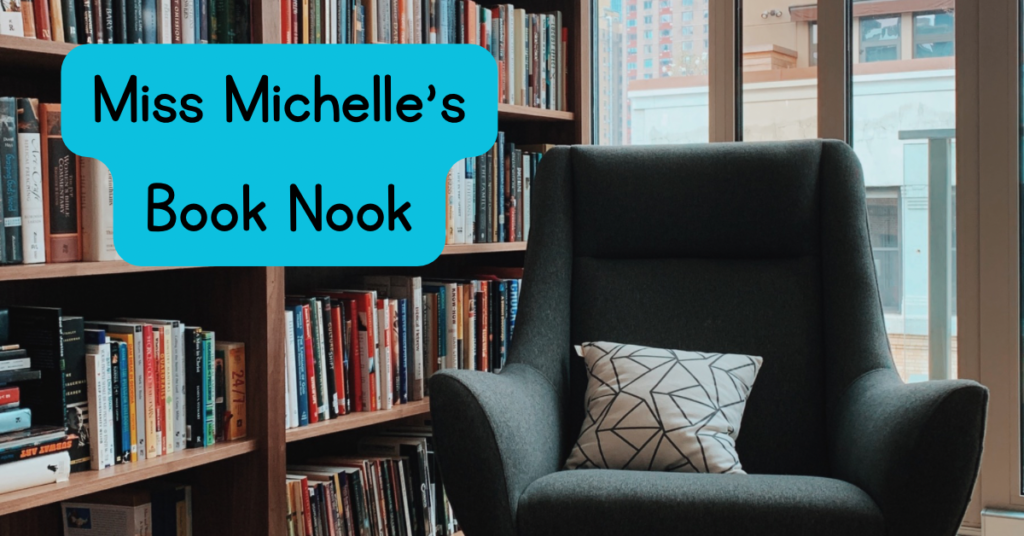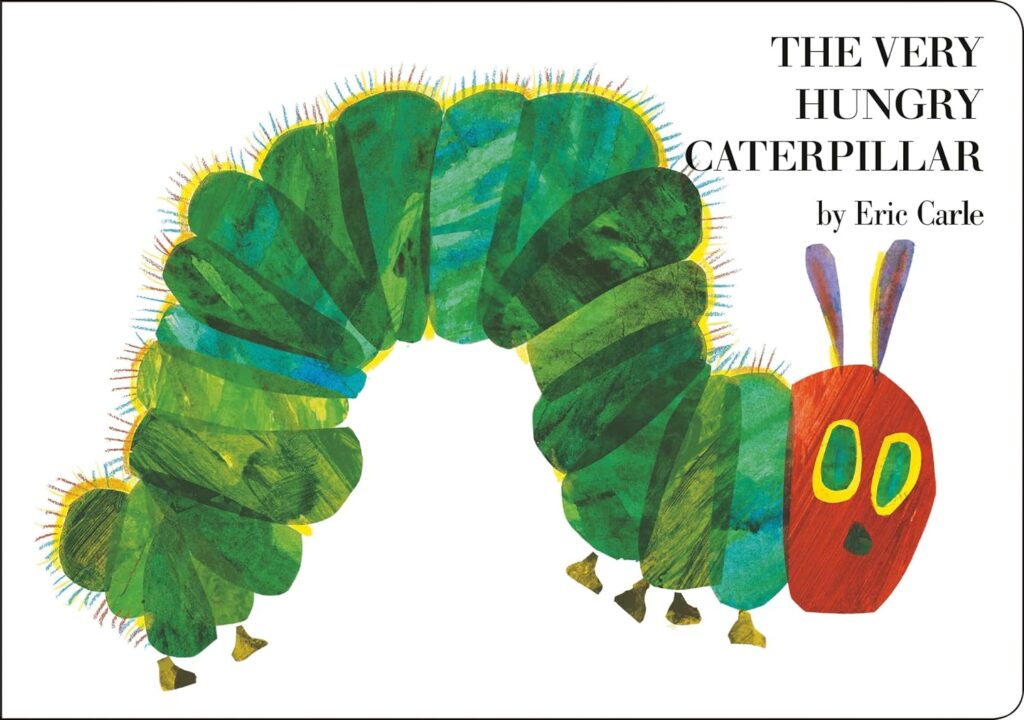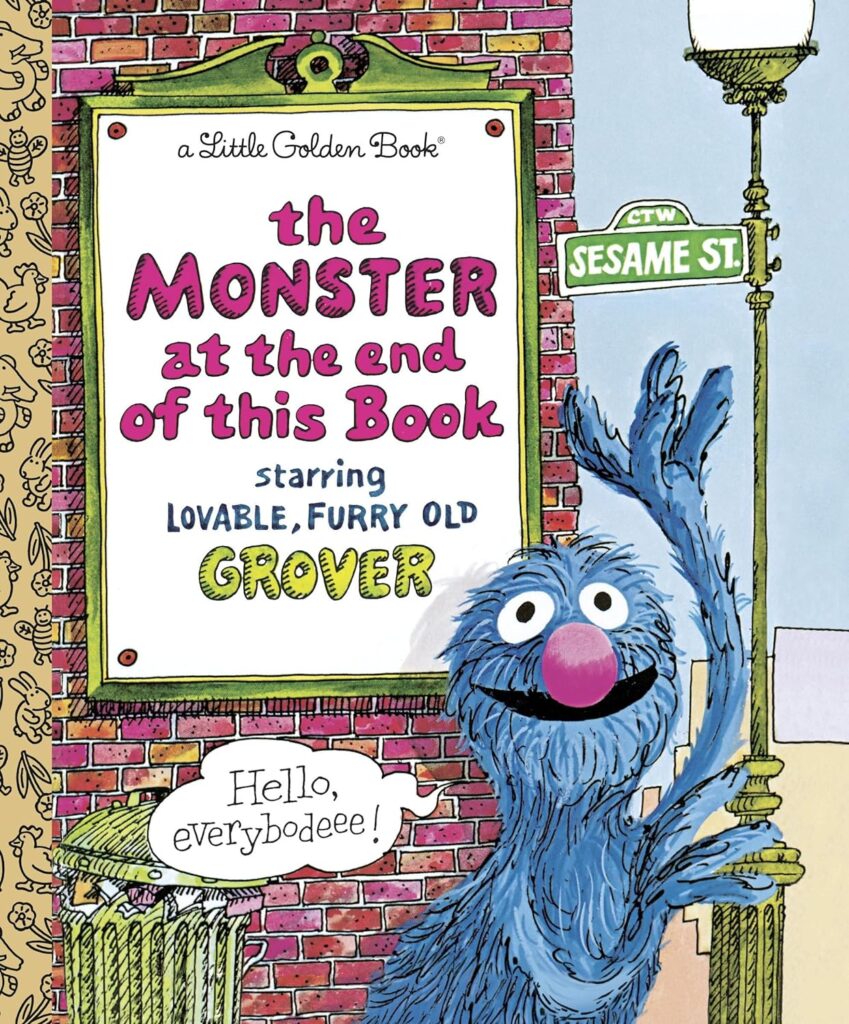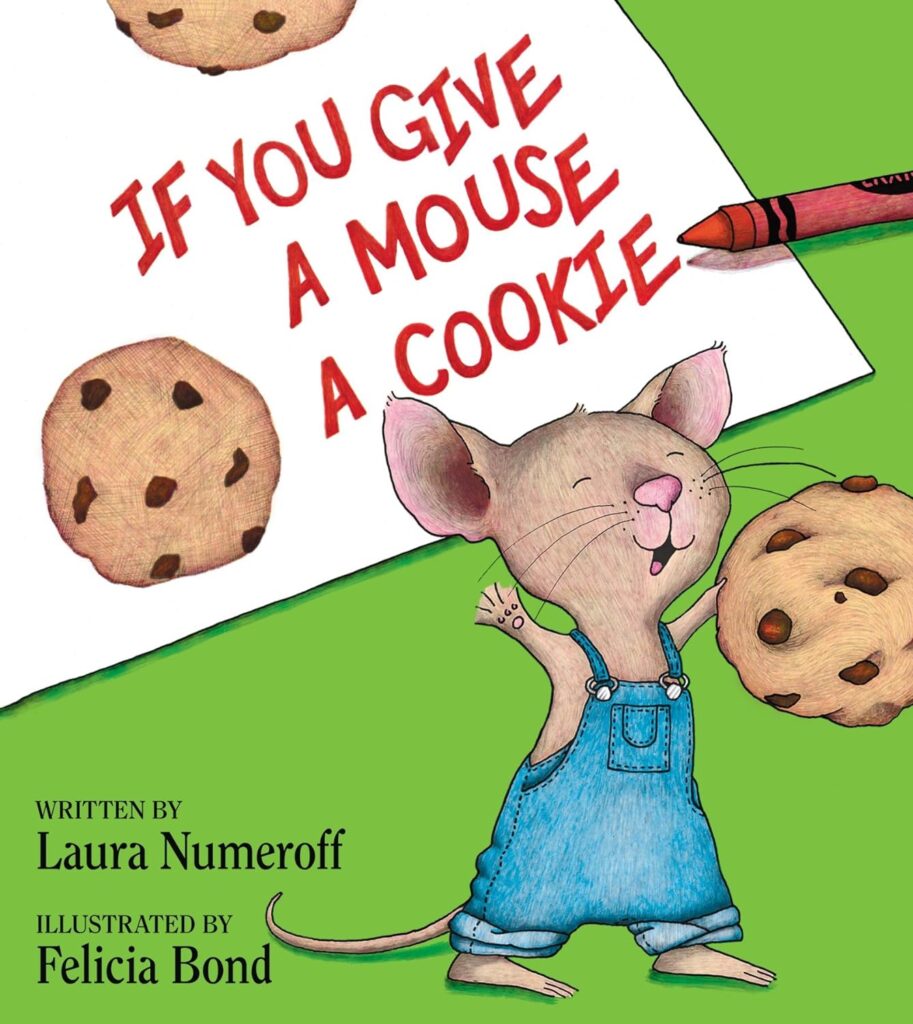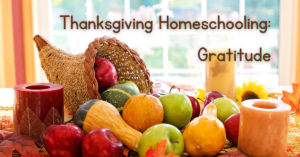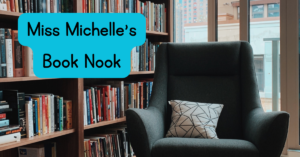This month I’m sharing some of my favorite classic picture books. All of these were published before the year 1986
THE MOST POPULAR PICTURE BOOK EVER?
The Very Hungry Caterpillar by Eric Carle
My heading may be debatable, but honestly: do I even need to talk about this one? A caterpillar hatches from a tiny egg on a sunny Sunday morning and eats its way through the week. It starts with fruits, which are not very filling, and by Friday it has a feast that includes pie and ice cream, and then it has a tummy ache. On Saturday it’s back to healthy food (a nice green leaf), which makes it feel much better. It makes a cocoon around itself, and two weeks later emerges as a beautiful butterfly.
You can use this book in so many ways – counting to five, days of the week, naming the different foods… You could use this book as a lead-in to talk about nutrition and MyPlate, which replaced the Food Pyramid in 2011. Of course there’s the science lesson of the life cycle from caterpillar to butterfly, which is incorrect in this book. (A butterfly comes from a chrysalis, a moth comes from a cocoon.) Plus, there are a lot of fun crafts you can do with kids to make their own caterpillars.
THE TRICK ENDING
The Monster at the End of this Book by Jon Stone
I remember this from when I was a kid. This was probably the first interactive book I encountered, and I thought it was so funny that Grover tried repeatedly to get me to stop reading because he was afraid of the monster at the end of the book, and then I got to the end and the monster was… Grover! Grover tries to tie the pages together, he tries to put a brick wall in the way, he begs and pleads and nothing works. (“Do you know that you are really strong?” Grover asks after we smash past the brick wall.)
There is a sequel with Grover and Elmo, but I prefer the original. I still come back to it at least two or three times a year when I’m doing storytime with toddlers or preschoolers. I don’t have any educational tips on this one – sometimes it’s good to read books simply for the fun of it.
LET THE WILD RUMPUS START!
Where the Wild Things Are by Maurice Sendak
Max, a little boy in a wolf costume, behaves so badly that his mother calls him a wild thing and sends him to bed without supper. His room turns into the outdoors and he sails for over a year to the land where the wild things are. He basically tames them by winning a staring contest and then becomes their king. “Let the wild rumpus start!” he says, and they have a party. Eventually Max misses home and decides to leave, despite the wild things protesting, “we’ll eat you up, we love you so!” He sails home and finds his supper waiting for him and it is still hot, which shows that the whole story was just Max’s imagination.
I love the end of the book. There is a lesson here – even when a child misbehaves, their caregiver still loves them very much. In the heat of anger Max’s mother said he couldn’t have supper, but she later (presumably) calmed down and changed her mind. You can refer back to this after you get angry, especially if your child starts saying that you don’t love them anymore. “Remember how Max still gets dinner, even after being punished? His Mom still loves him, right? Well it’s the same way for you. No matter what you do, I will always, always still love you.”
Bonus: a quote from the author
“Once a little boy sent me a charming card with a little drawing on it. I loved it. I answer all my children’s letters — sometimes very hastily — but this one I lingered over. I sent him a card and I drew a picture of a Wild Thing on it. I wrote, “Dear Jim: I loved your card.” Then I got a letter back from his mother and she said, “Jim loved your card so much he ate it.” That to me was one of the highest compliments I’ve ever received. He didn’t care that it was an original Maurice Sendak drawing or anything. He saw it, he loved it, he ate it.”
Maurice Sendak
CONSEQUENCES
If You Give a Mouse a Cookie by Laura Joffe Numeroff
There are a lot of books in this series, but here’s the one that started them all. If you give a mouse a cookie, he’s going to want a glass of milk. He’ll want to check the mirror for a milk mustache, and then he’ll see that he needs to trim his fur so he asks for scissors, and so on until he’s back to getting a glass of milk, and asking for a cookie to go with it. All of the books in the series come full circle like this.
You can use this to talk about cause and effect, or you can talk about sequencing. “First, the mouse had a cookie. Next, the mouse asked for a glass of milk. Then, he asked to look in a mirror…” You can talk about cookies, of course, and lead into a science lesson where you actually bake cookies together. Tara from the blog Homeschool Preschool actually does a far better job of showing how to use this book than I do, so I’ll just leave a link here for you…
Check out Miss Michelle’s Book Nook
Miss Michelle shares her book recommendations each month on the In Our Homeschool blog. Find links to all of her posts here.
Miss Michelle is the sister of Kristen, who writes this blog. She has a daughter who is 9 and a son who is 4. They are not home-schooled, but Miss Michelle is super supportive and proud of her sister for doing it. She has been a full-time Children’s Librarian for over 15 years and loves to recommend her favorite books. You can follow her on Goodreads, where she keeps track of books she has read for storytime, at https://www.goodreads.com/user/show/170007385-miss-michelle.
Disclosure: As an Amazon Associate I earn from qualifying purchases. This post may include affiliate links which means I may earn commissions for purchases made while using my link.

